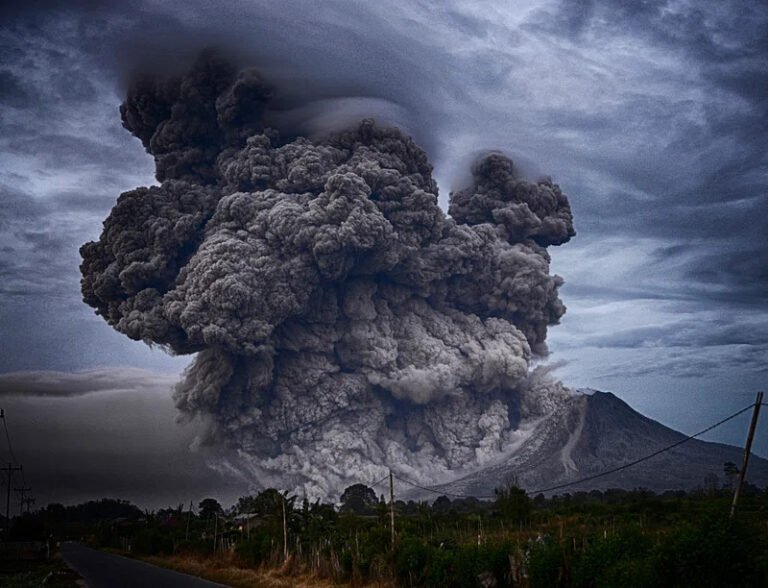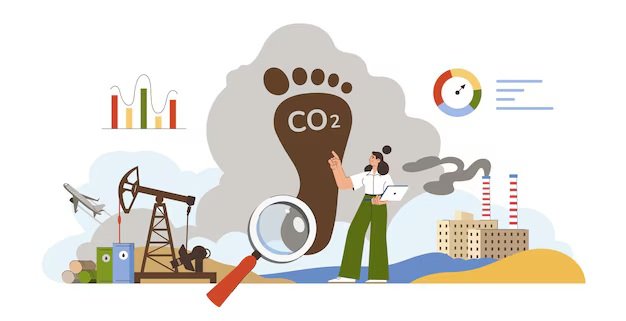What was the Environmental Impact of the Industrial Revolution?
The Industrial Revolution was one of the biggest shifts in human history. It changed the way people lived, worked, and built their societies. For the first time, machines replaced hand tools, steam engines powered industries, and cities grew at an astonishing rate. But along with this progress came a heavy price—environmental damage on a scale never seen before.
The air became thick with smoke from coal-burning factories, rivers turned into dumping grounds for industrial waste, and vast forests were cleared to fuel the booming industries. These changes were so massive that we are still dealing with their consequences today—climate change, pollution, and loss of natural habitats.
In this guide, we will take a look at the environmental costs of the Industrial Revolution. We’ll share real-life experiences, expert insights, and solid research to help you understand what happened and why it still matters.

In This Article
- The Industrial Revolution: A Brief Overview
- The Rise of Air Pollution and Its Consequences
- Water Contamination and Its Deadly Impact
- Deforestation and Habitat Destruction
- Climate Change: The Long-Term Consequences
- The Social Toll of Environmental Damage
- Lessons for Modern Industry and Sustainable Solutions
- Conclusion
The Industrial Revolution: A Brief Overview
Imagine living in a small village where everything is made by hand—clothes, tools, food. That was life before the Industrial Revolution. Then, almost overnight, factories appeared, producing goods faster and cheaper than ever before. Steam engines, powered by coal, revolutionised transportation and manufacturing, bringing wealth and opportunity.
The Industrial Revolution started in Britain in the late 1700s and quickly spread to Europe, North America, and beyond. It created jobs, increased trade, and improved standards of living. However, it also led to crowded cities, dangerous working conditions, and widespread pollution.
The impact on the environment was devastating. Factories released black smoke that covered entire towns. Rivers became lifeless, filled with chemicals from textile mills and ironworks. Forests were stripped away to make room for farms and industries. Climate change, which we now fight to control, had its roots in this era of relentless industrial expansion.
The Rise of Air Pollution and Its Consequences
Coal: The Fuel of Progress and Pollution
The backbone of the Industrial Revolution was coal. It powered steam engines, factories, and transportation, driving economic growth and technological advancements. But behind this progress was an invisible, deadly cost—air pollution.
When coal burns, it releases toxic gases like sulfur dioxide (SO2), nitrogen oxides (NOx), and tiny soot particles that linger in the air. These pollutants poisoned the lungs of factory workers, turned city skies grey, and eventually led to acid rain that damaged crops, rivers, and forests. What seemed like an unlimited energy source was quietly making people sick.
Case Study: The Great Smog of London (1952)
London’s Great Smog of 1952 wasn’t just a freak weather event—it was the result of more than a century of burning coal. By the time December rolled around, coal smoke had been choking the city for decades. When cold air trapped pollution close to the ground, the thick, poisonous fog became deadly. Over 12,000 people lost their lives due to respiratory illnesses caused by the smog.
This disaster forced governments to wake up. It led to the UK’s Clean Air Act of 1956, which restricted coal burning and encouraged cleaner energy sources.
Expert Insight
Dr. Richard Alley, a climate scientist, explains, “The burning of coal during the Industrial Revolution released large amounts of soot and sulfur into the atmosphere, contributing to poor air quality, acid rain, and long-term climate impacts.”
Pollution Breakdown
| Pollutant | Industrial Source | Environmental Effect |
|---|---|---|
| Sulfur Dioxide (SO2) | Coal burning | Acid rain, respiratory issues |
| Particulate Matter | Factory emissions | Lung diseases, smog formation |
| Carbon Dioxide (CO2) | Industrial processes | Climate change |

Water Contamination and Its Deadly Impact
Industrial Waste and Waterways
Factories in the Industrial Revolution dumped massive amounts of untreated waste directly into rivers, poisoning the water that people depended on for drinking, bathing, and fishing. Toxic chemicals like mercury and lead seeped into these waterways, killing fish and making people dangerously sick. Unlike today, where we have wastewater treatment plants, back then, there were no rules stopping industries from polluting rivers. The result? Widespread disease, environmental devastation, and a crisis that cities could no longer ignore.
Real-World Example: The River Thames in the 19th Century
One of the most infamous examples of industrial water pollution was the River Thames in London. By the 1850s, the once-thriving river had turned into a filthy, disease-ridden sewer. Raw sewage, industrial chemicals, and factory waste are poured into the water every day. The river’s surface became thick with scum and rotting debris, and the stench was so overpowering that people avoided going near it.
Then came the “Great Stink” of 1858. That summer, the heat intensified the smell, making it unbearable to live or work near the river. Lawmakers, who had long ignored the problem, were finally forced to take action. This led to the creation of London’s modern sewer system—one of the first major public health infrastructure projects aimed at tackling pollution.
Expert Perspective
Environmental historian Dr. David Stradling has extensively studied the impact of industrialization on urban waterways. In his book Where the River Burned: Carl Stokes and the Struggle to Save Cleveland, co-authored with Richard Stradling, he examines how industrial activities led to severe pollution of rivers, transforming them into conduits of waste.This work underscores the environmental and public health challenges posed by unchecked industrial growth, highlighting the urgent need for sustainable practices to protect vital water resources.

Deforestation and Habitat Destruction
Timber for Industry
To fuel the industry, vast forests were cleared for timber and agriculture. This led to habitat destruction and biodiversity loss. The demand for wood was immense—factories needed fuel, railroads needed tracks, and expanding cities needed construction materials. Trees were cut down faster than they could regrow, permanently altering landscapes.
Example: The American Midwest
In the 19th century, the United States experienced large-scale deforestation. Forests in the Midwest and along the East Coast were cleared at an alarming rate. Railroads expanded westward, requiring millions of wooden railroad ties, while factories and growing cities consumed vast amounts of timber for construction and fuel.
This wasn’t just about trees—entire ecosystems were wiped out. Wildlife lost their homes, and once-thriving landscapes turned barren. Soil, once held in place by deep-rooted forests, became loose, leading to erosion and land degradation. Without trees to absorb rainfall, flooding became more severe in many areas.
In today’s world, we’re still dealing with the consequences. Large swaths of land that were deforested over a century ago still struggle to support rich ecosystems. Some forests have been replanted, but many never returned to their original state.
Expert Insight: Environmental historian Professor John R. McNeill explains, “The deforestation that began during the Industrial Revolution set the stage for the environmental challenges we face today. Understanding this history helps us push for better conservation policies.” His research highlights how industrial activities, including large-scale logging and land clearing, contributed to long-term environmental degradation. Recognizing this historical impact is crucial for developing effective conservation strategies today.
Deforestation Statistics Since 1800
| Region | Percentage Forest Lost Since 1800 |
|---|---|
| United Kingdom | 50% |
| United States | 40% |
| China | 35% |

Climate Change: The Long-Term Consequences
The Birth of Anthropogenic Climate Change
The large-scale burning of fossil fuels significantly increased atmospheric CO₂ levels, setting the stage for modern climate change. Studies show that industrialisation marked the first measurable rise in global temperatures. Factories, steam engines, and mass production needed energy, and coal was the cheapest, most available source. But no one at the time realised the long-term damage it would cause.
A 2023 study published in Scientific Data, titled “National contributions to climate change due to historical emissions of carbon dioxide, methane, and nitrous oxide since 1850,“ found that cumulative CO₂ emissions from industrial activities have contributed to an approximate global mean surface temperature increase of 0.8°C between 1850–1900 and 2010–2019. The study explained how industrial emissions, particularly from fossil fuel combustion, have driven the rapid increase in atmospheric greenhouse gases.
The effects are all around us now—hotter summers, stronger storms, rising sea levels. Industrialisation didn’t just change how we work; it changed the very air we breathe and the climate we depend on. What started as progress came with a cost, and we are still paying the price today. But understanding this history helps us make better choices for the future—choices that could slow or even reverse some of the damage if we act fast enough.
The Social Toll of Environmental Damage
Health Impacts
Workers and residents in industrial cities suffered from respiratory diseases, cholera, and other pollution-related illnesses. Children in factories had shorter lifespans due to toxic exposure. The reality of industrial life was harsh, and for many, survival itself was a daily struggle.
In the 1840s, Friedrich Engels documented the harsh realities faced by industrial workers in England. He observed that in cities like Manchester and Liverpool, diseases such as smallpox, measles, scarlet fever, and whooping cough were rampant, with mortality rates significantly higher than in rural areas. In Manchester, the overall death rate was 1 in 32, compared to 1 in 45 or 46 in the countryside.
Public health reports from the time described entire neighbourhoods where coughing never stopped. Thick smog blanketed the streets, and open drains carried disease through the water supply. Cholera outbreaks swept through these communities, taking the weakest first. Engels’ observations highlight the severe health impacts of environmental damage during the Industrial Revolution, underscoring the human cost of rapid industrialisation. The pollution and lack of sanitation turned cities into breeding grounds for disease, leaving behind a legacy of hardship and loss.
Lessons for Modern Industry and Sustainable Solutions
1. Regulations and Green Policies
Governments worldwide have stepped up to curb industrial pollution. Laws like the Clean Air Act in the U.S. and similar policies in the UK and EU have significantly reduced air pollution. Regulations now limit carbon emissions, encourage energy efficiency, and penalise industries that harm the environment. Without these policies, the world would still be suffocating under thick industrial smog.
2. Investing in Renewable Energy
Industries are switching to renewable energy sources like wind, solar, and hydroelectric power. Countries like Sweden have led the charge by making renewables a national priority, cutting their carbon footprint while keeping their economy strong.
3. Waste Reduction and Circular Economy
Industries are learning that waste is not just an environmental issue—it’s a financial one. By adopting circular economy principles, companies are recycling materials, reducing waste, and even turning byproducts into new products. This shift benefits both business and the planet.
4. Responsible Resource Management
Sustainable industries prioritise responsible sourcing of raw materials, reforestation efforts, and water conservation to ensure long-term environmental health.
5. Innovation for a Sustainable Future
Technology has the power to drive sustainability. From carbon capture to electric transportation, industries are finding new ways to cut emissions and minimise their impact. The future of industry isn’t just about profit—it’s about sustainability, too.
Conclusion
The Industrial Revolution reshaped the world, but its environmental costs still affect us today. Air and water pollution, deforestation, and climate change are legacies we must address. By learning from history, we can pursue progress without repeating past mistakes. Investing in clean energy, enforcing strong environmental policies, and adopting sustainable industrial practices are crucial steps forward. Each of us has a role—supporting green initiatives, reducing waste, and advocating for responsible resource use. The past has shown us the dangers of unchecked industrialisation; the future depends on our commitment to sustainability and innovation. Progress must not come at nature’s expense.







